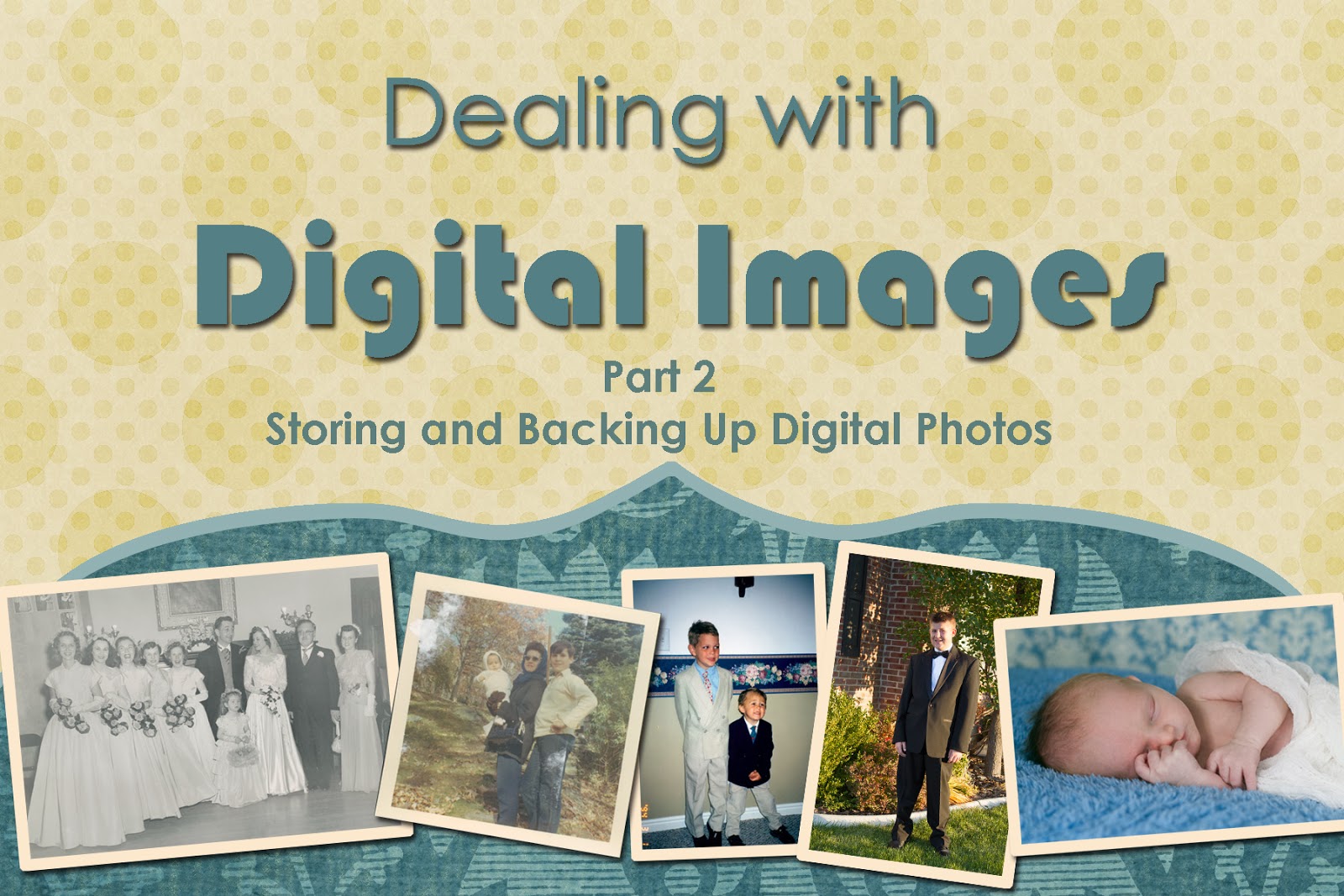I have at least 30 boxes of old photos in my house. Most of them are jumbled in no particular order as they were collected when moving older relatives. I feel a great responsibility in being the caretaker of this family history. If you are familiar with older photos, you know that some are yellow looking, some seem to be cracking or peeling, and others are so brittle that they are falling apart. These conditions are all due to the chemicals used in the development process and in the paper. There is no way to reverse these processes, so the best way to save the image is to scan it and make it into a digital image. There are many ways to accomplish this:
- Many people (including me) have a 3-in-1 or 4-in-1 printer that has a scanning bed. Make sure that the glass is clean to avoid spots and then scan the photo. If you are given a choice about quality, always choose the highest. Image quality is described as "dots per inch" or DPI. You want at least a 300 DPI. 600 DPI is my choice if I have the option.
- You can hire someone who owns a high speed scanner or rent the scanner. If you are interested in this option, I recommend looking for an Heritage Makers consultant in your area. Many own these high speed scanners. There is usually a per image charge of about $.29. I had the opportunity to rent a scanner a few years ago and scanned over a thousand photos for just $50.00. I wish I had done a lot more!
- There are companies everywhere that will scan photos. ScanCafe is one such business where you can mail them your photos and they will digitize them. Although they have better pricing if you are scanning large quantities, you have to balance the risk of putting your photos in the mail. Look in your area for a local scanning company before you ship your photos away.
- For large photos you may have good success with making a photograph of it. You will have to adjust your camera's settings until you get a usable image.
Once you have your photos digitized, you need to organize them in a similar manner to your digital photos. This is much more difficult with older photos that were scanned in no particular order, but you can set up folders by decades and drag and drop the photos one at a time into the folders. It may help to also label the family name such as "Foster 1950s". You may choose to label the photos by name such as "Gram Collins ". If you have a lot of time you could rename the files to indicate who is in the photo. Future generations will know even less than you do, so save what you know. Labeling is important!
Once your photos are organized, you need to DO something with them. The simplest thing is to print the photos and display them in frames, but that can turn into clutter in a hurry. Canvases have become very popular of late and that is a great way to preserve a really special photo.
You may choose to make scrapbooks- either using traditional paper methods or digital scrapbooking methods. One of my favorite techniques is to drop the photos into a pre-made book template. Shutterfly and Costco make books at great prices, although I have heard complaints about the quality of the books. I use Heritage Makers. There are thousands of templates so that each book can have its own "feel." I have made books about trips, individual people, family recipes, and year in review retrospectives.
Since digital files are so easy to share, make sure that you share with your family. Since there may only be one photo of great-great grandpa, make sure that everyone has a copy! You can use CDs to share photos, but caution family members to back them up in safer methods.







